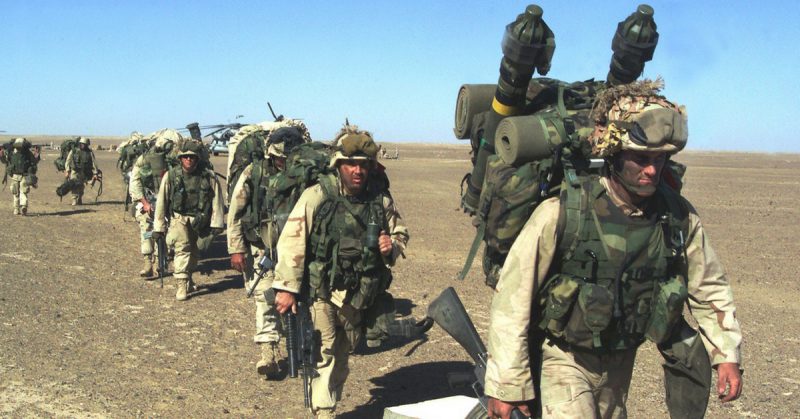The modern soldier now carries the heaviest combat load in the history of war. Weighing in at over 88 pounds in some cases, it is no wonder why so many combat veterans are coming home with back and knee problems. This article will cover the uniform, accessories, and basic combat load for a United States Army soldier deploying to Operation Iraqi Freedom in the mid 2000’s.
Uniform
The standard uniform of a soldier deploying Operation Iraqi Freedom in the mid-2000’s consisted of the Army Combat Uniform (ACU) coat and pants, tan t-shirt, rigger’s belt, tan combat boots, socks, and patrol or boonie cap when on post.
The ACU coat and pants are made from a 50/50 nylon/cotton ripstop material. The pockets and patches are secured with a hook and pile material instead of buttons like their predecessors. The original camo pattern is called Universal Camo Pattern, which is digitized with shades of green, tan, and grey.
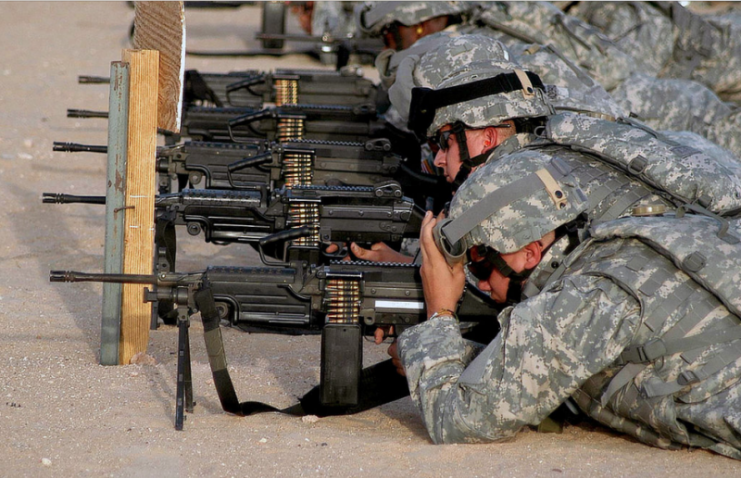
Other variations include the Crewman’s coat and pants (A2CU) and the Army Combat Shirt (ACS). The Crewman’s set is made of a material called aramid which is a synthetic blend. The A2CU is very similar to the ACU uniform, but has a few changes in the pockets, including some with zippers, and a hook and pile strap around the waist that is adjustable. The ACS is made of a similar material to the Crewman’s set, but has a thinner breathable material on the torso and lacks pockets in this area.
Because of strict uniform regulations on post, soldiers going out on missions would often have to carry these uniform variations to their motor pool and change in the vehicles. Some units were allowed to wear the boonie cap which is a wide-brimmed hat that provides a bit more protection from the sun. The standard patrol cap was worn on some posts, so soldiers would often carry both on them depending on where their mission took them.
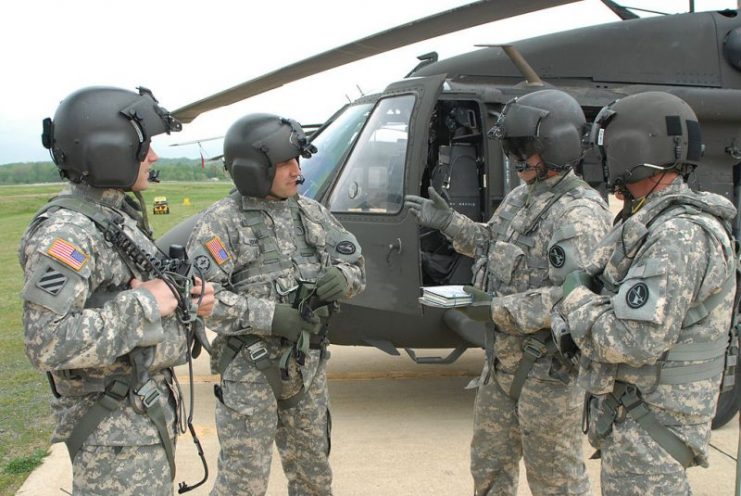
Boots were issued in two styles including a summer and winter variant. Summer boots include vents near the arch of the foot which allows ventilation. Winter boots are made of a waterproof material and have a thin layer of insulation inside.
Body Armor
The Interceptor Body Armor (IBA) was introduced in the late 1990’s and was used until the late 2000’s. This bullet-resistant vest featured front and back protective plates originally. Later, side plates were added, along with neck, shoulder, and groin protective pads. With all of these attachments, the vest weighed in at 33 pounds.
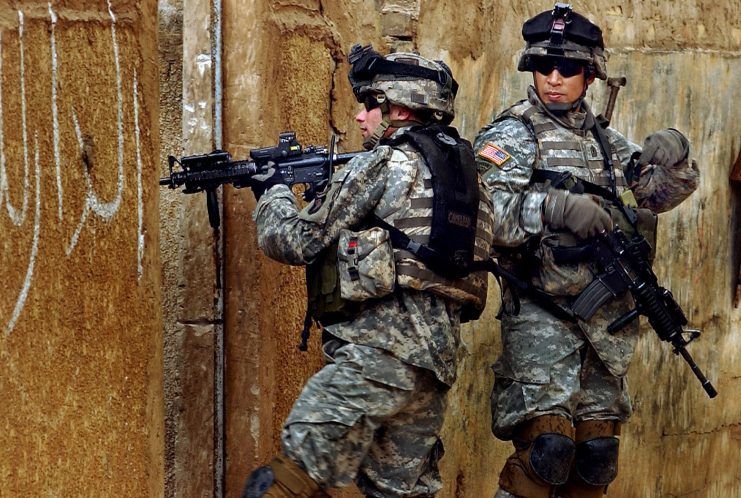
Later, in 2007, the Improved Outer Tactical Vest was introduced. This is similar to the IBA, but has a quick-pull cord to allow the vest to be removed quickly in an emergency situation. Also, the side plate carriers are built into the vest, unlike the IBA. One major complaint about this vest is that it hangs lower and the plates rub on the upper thighs when walking.
Soldiers would often attach their ammo pouches and first aid kits to their vests since they are designed to also function as Modular Lightweight Load-carrying Equipment. The Fighting Load Carrier was designed to be worn over the IBA and carry additional ammo. Some high-speed soldiers would purchase custom load carriers that could also be worn over the IBA.
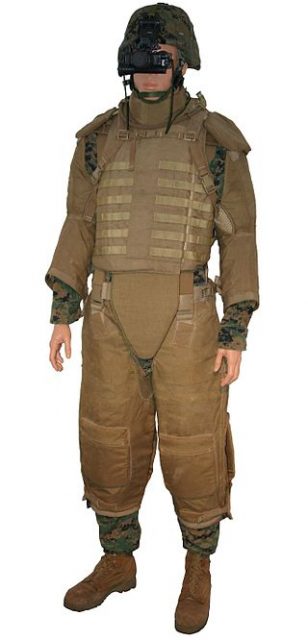
The Individual First Aid Kit (IFAK) and 6 spare magazines were required to be worn on the vest. The IFAK consists of a small medical kit containing a tourniquet, combat gauze, 14 gauge needle for chest decompession, tape, and gloves. Some team members would also carry their radios attached to the vests.
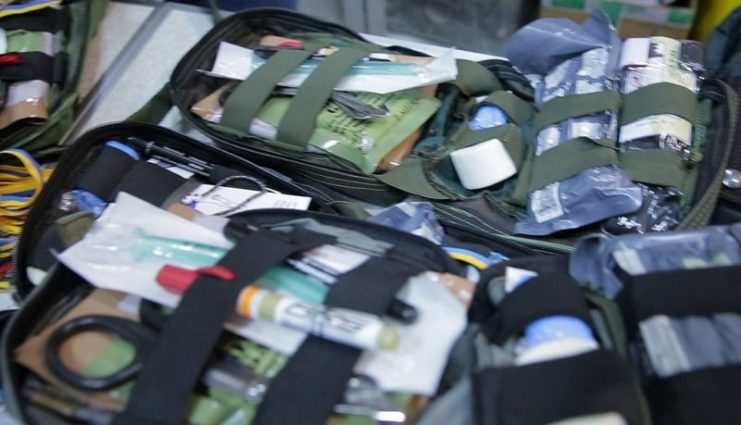
The Advanced Combat Helmet was introduced in the early 2000’s and is still in use today. The helmet was designed so that night vision optics could easily be attached to the front-mounted plate. Unit insignias were often worn on the sides of the helmet, and a green band with infrared reflective material (“cat-eyes”) can be seen from behind. Soldiers would often have their battle roster numbers sewn to this green band. Attachments such as flashlights and infrared beacons could be attached to the sides of the helmet.
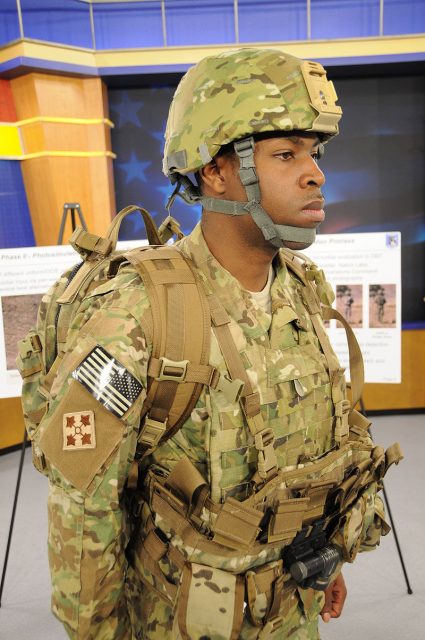
Weapons
The most commonly carried weapon by combat troops is the M-4 carbine. This rifle is very similar to the M-16, but has a shorter 16″ barrel. The carbine is also outfitted with a picatinny rail on the handguards and in place of the carrying handle on its predecessor. The basic ammunition load on this weapon is 210 rounds of 5.56×45 mm bullets, including one 30-round magazine loaded in the rifle, and 6 spares.
The M-203 is a variant of the M-4 carbine which sports a 40 mm single shot grenade launcher under the barrel and handguard. One member of each squad or team often carried this weapon.
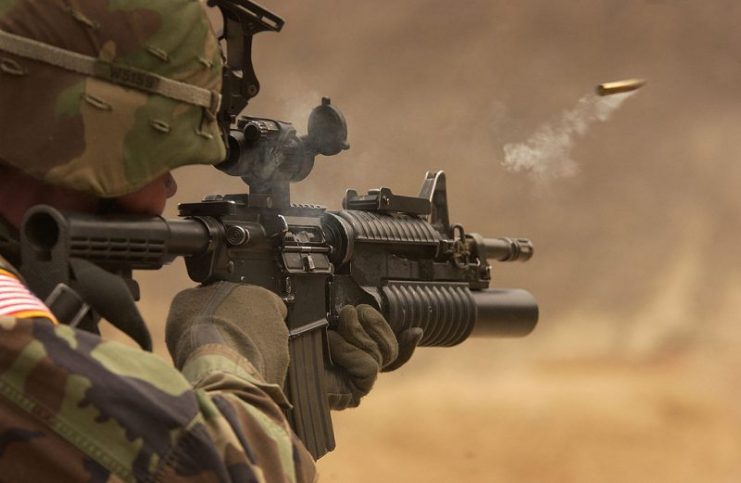
M-9 pistols were often assigned to platoon leaders and sergeants. This Beretta pistol fires 9mm ammunition from a 10 round magazine. They are known for being rugged, reliable, and fairly lightweight.
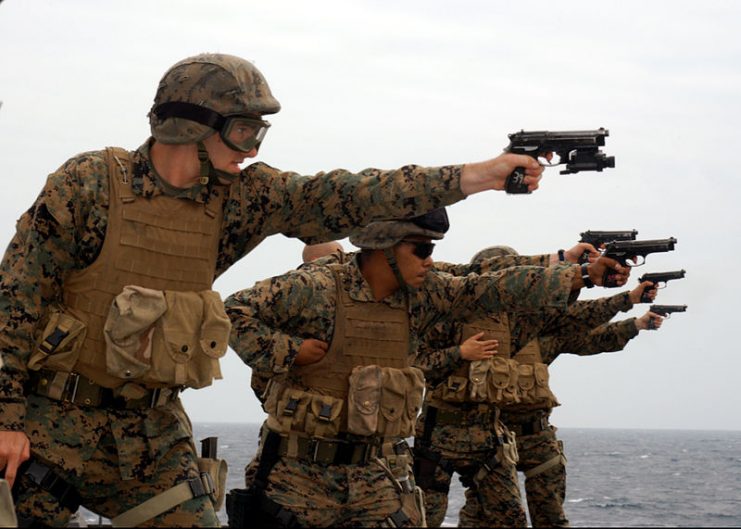
Each team often has one M-249 Squad Automatic Weapon (SAW) gunner. The SAW is capable of fully automatic fire and is fed with linked 5.56×45 mm ammunition, but the weapon is also capable of firing from standard M-4/M-16 magazines. SAW gunners carry a minimum of 600 rounds of spare ammunition in plastic drums. Since these gunners carry a heavy load, this burden is often passed to the new or lower ranking individuals on the team.
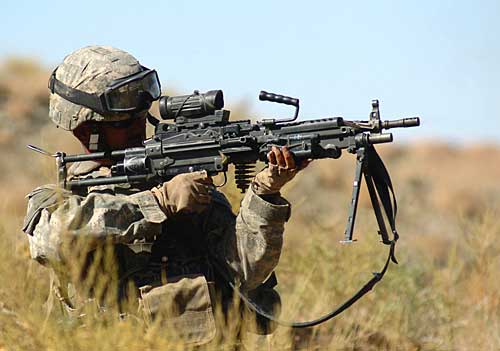
Combat units often had several attachments for these weapons, including red-dot sights or scopes, night vision optics, flashlights, and bipods. The M-68 red dot Aimpoint sight was one of the more common attachments. Some soldiers were assigned Advanced Combat Optical Gunsights or Eotech sights which were highly sought after. The AN/PEQ-2 laser sight is a night vision optic that can be used to either illuminate or mark targets, as well as sight enemies at night.
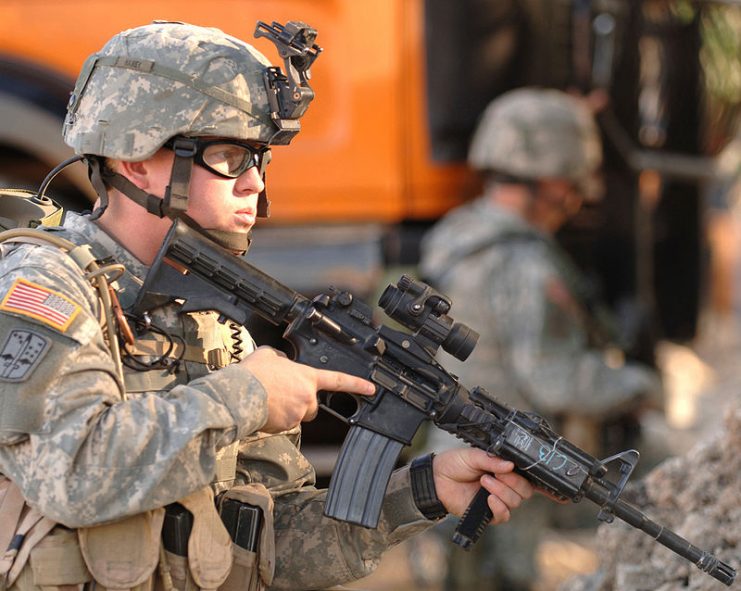
Vehicle mounted weapons included the M-240B, M2 50-caliber machine gun, and Mk-19 grenade launchers. The turrets that these weapons were mounted to were initially controlled by a crank that allowed the turret to rotate on target. Later, the turrets were controlled by an electronic joystick and motor which allowed the gunner to rotate the turret quickly.
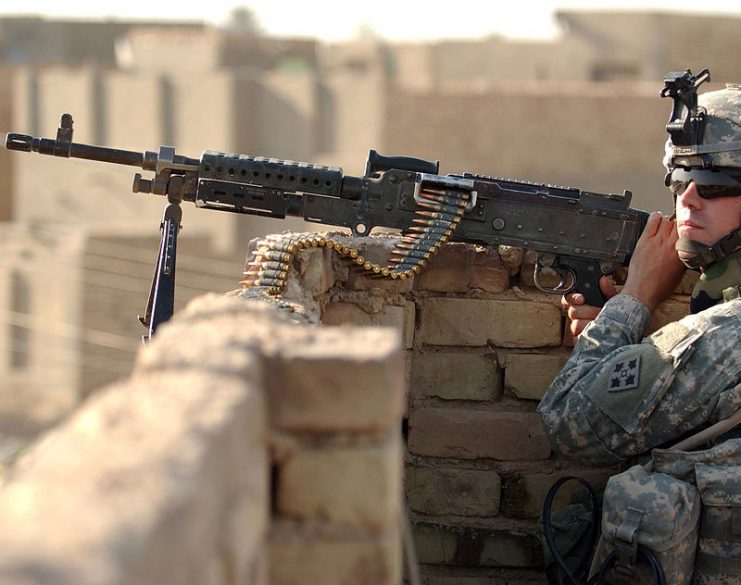
Accessories
Many accessories were worn by soldiers. Depending on unit regulations, some were mandatory, and often these regulations would change during the deployment.
Ballistic eye protection was required to be worn at all times. Tinted glasses could be worn during the daytime, and clear lenses were required at night. Oakley brand eye protection was very popular and was issued by some units. Soldiers requiring corrective lenses for their vision were issued eye protection with corrective lenses.
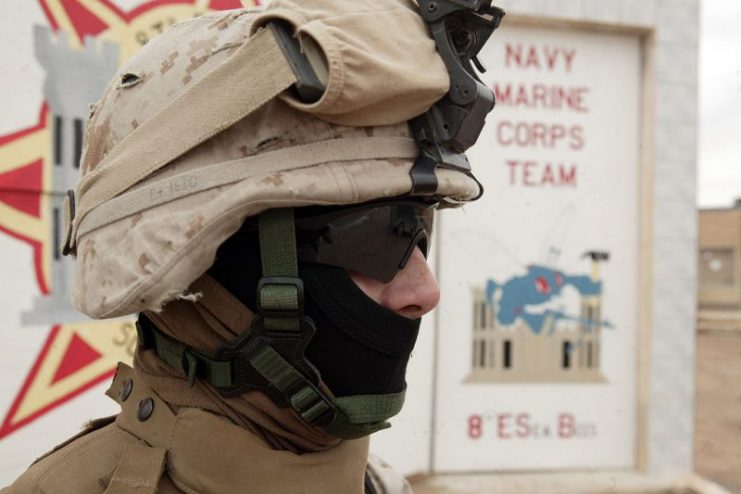
Knee and elbow pads were required to be worn by some units. These bulky protective pads provided excellent protection when taking a knee or going prone in rocky environments. When seated, however, the straps of the knee pads would often cut off circulation to the legs.
Night Optical Devices were required to be carried at all times, and were secured to the ACH helmet with a tie-down. During use, they attached to a plate mounted on the helmet and were able to be rotated into a up or down locked position.
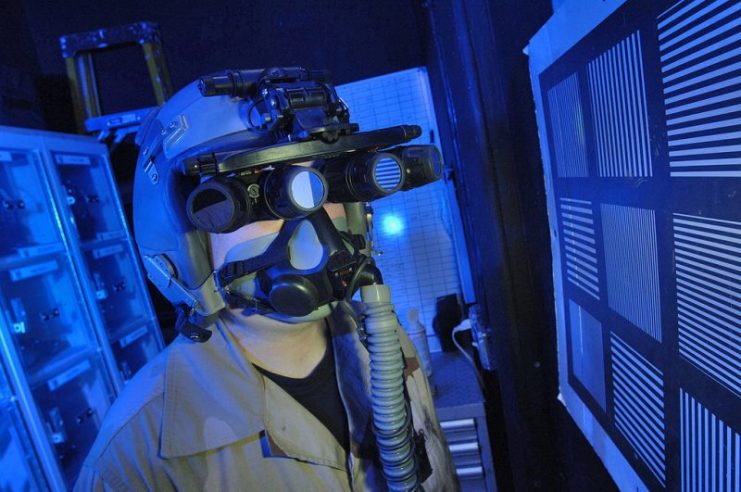
Gloves were also a requirement, and some civilian models were approved for wear. The two most commonly issued gloves included a nomex flyer’s glove which was made of a thin material allowing for dexterous use. A much thicker cold-weather glove was issued also, but not used very often.
Medics
Medics and forward observers also carried a heavy burden in combat zones. Medics were required to carry all of the above mentioned equipment, plus their aid bag, which could weigh more than 22 pounds when fully stocked with Intravenous fluids. All supplies contained within were stocked and inventoried by the medic. These supplies often included items for trauma support such as gauze, tourniquets, compression wraps, and other items to open airways and assist with breathing. Morphine was required to be kept in a locked container and accounted for because of abuse in some units.
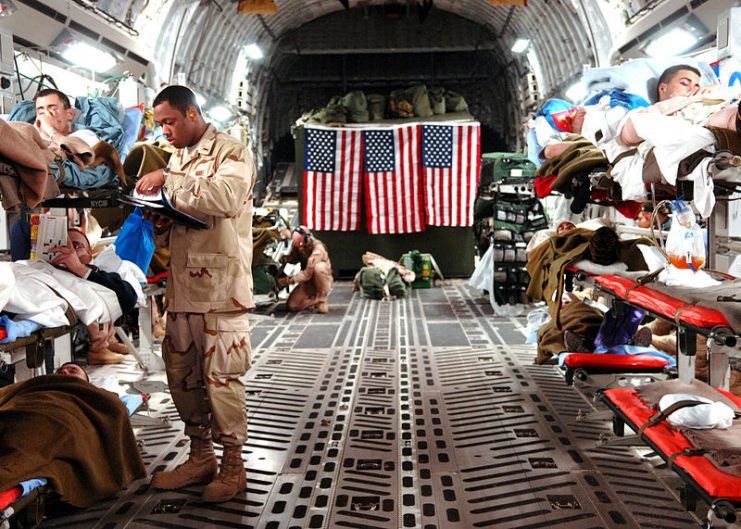
Conclusion
Modern warfighters carry a heavy burden. Not only are all these items extremely heavy when added up, but they are also very expensive. Lost equipment happens, and the replacement cost falls on the soldier who signed for it. However, these items improve the safety of the soldier, so some sacrifices must be made.
